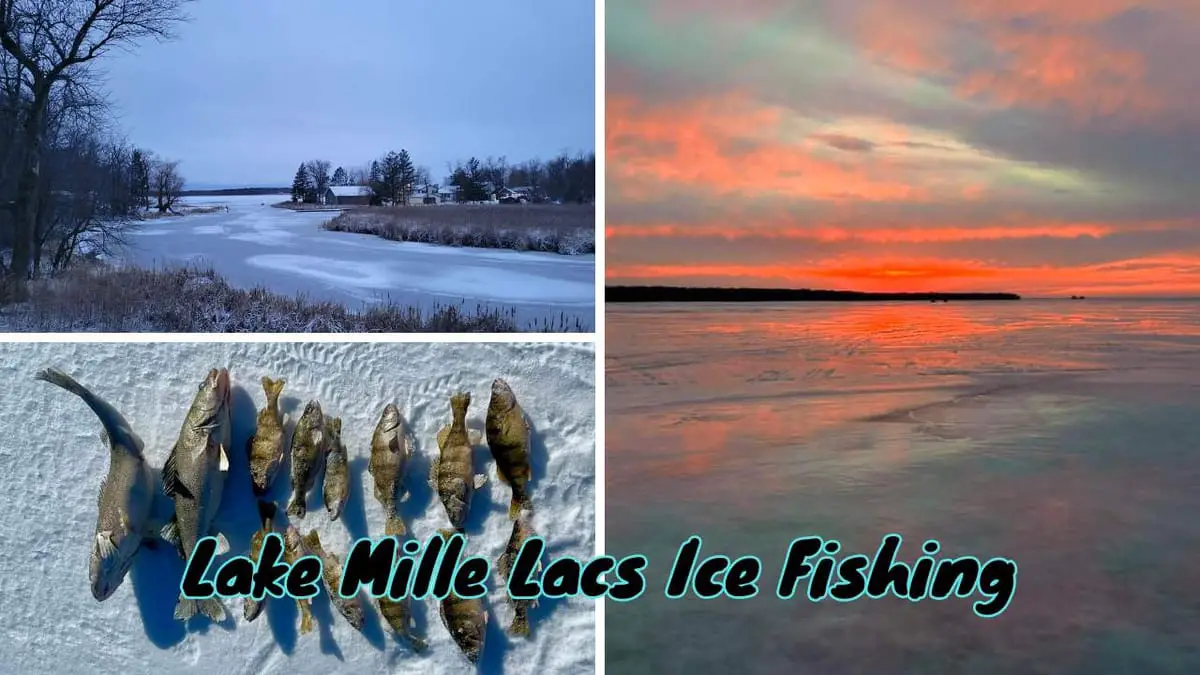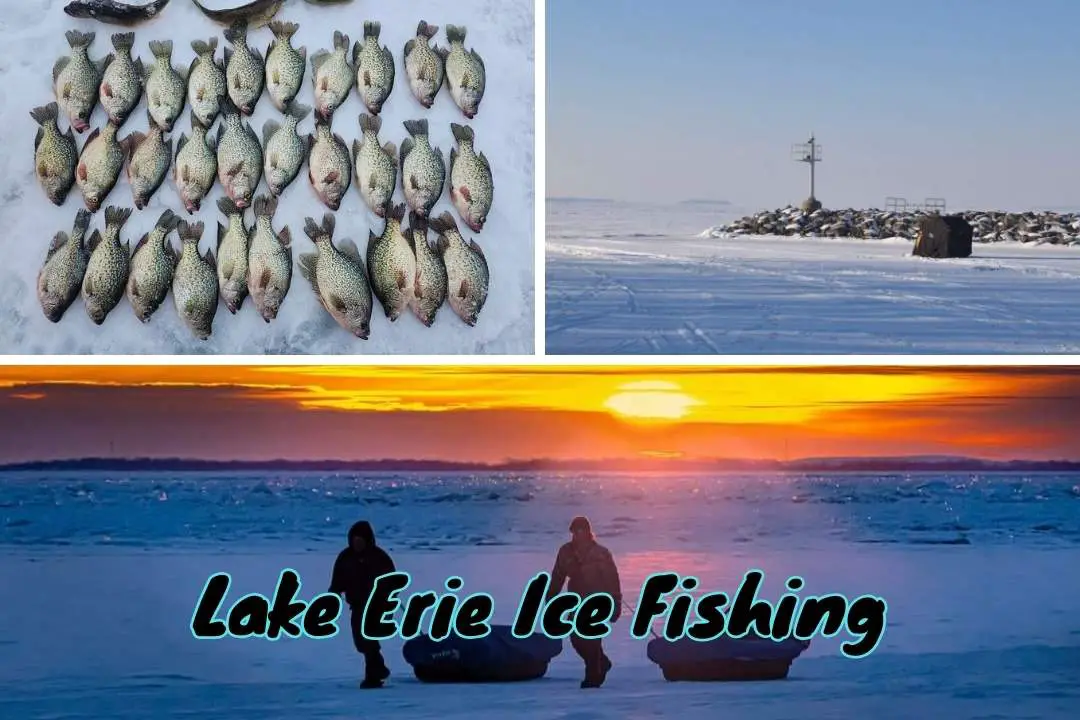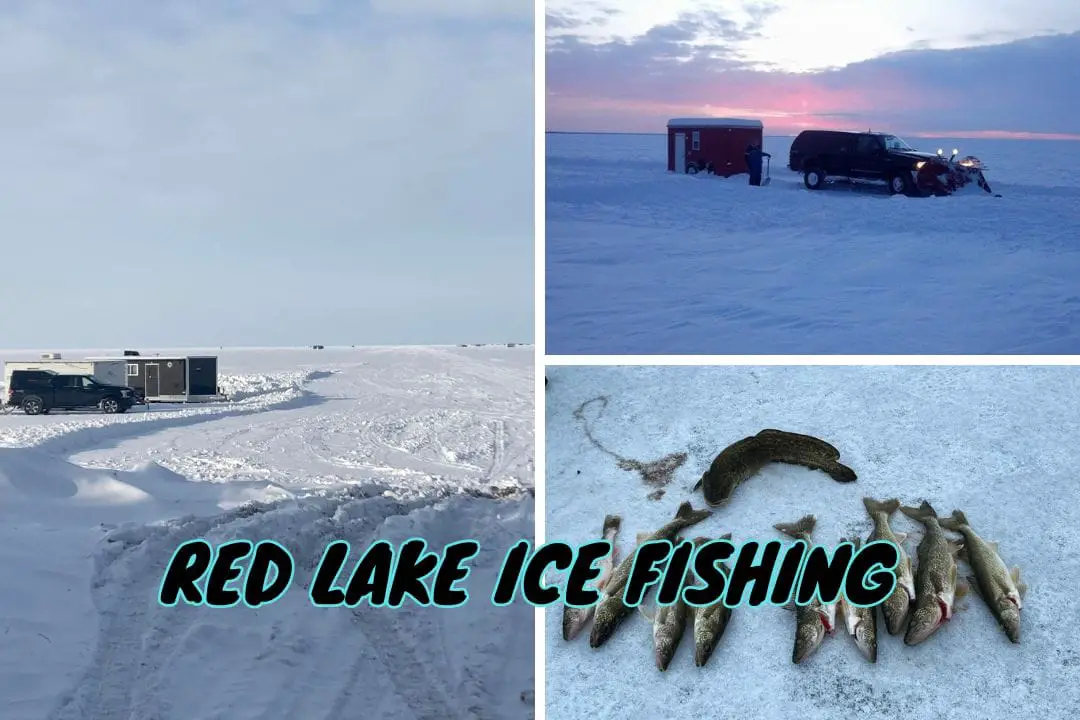The Melting Reality: How Climate Change is Shortening Ice Fishing Seasons in The Great Lakes Region
Uncover the pressing issue of climate change's influence on ice fishing in our post, shedding light on the diminishing windows of opportunity for anglers amidst warming temperatures and receding ice cover.
The rhythmic thud of an ice spud once signaled the start of the season – a heartbeat on the frozen expanse of the Great Lakes. Anglers carved their temporary cities, laughter ringing out under vast winter skies. But that soundtrack is changing.
Warmer winters mean thinner ice, and seasons cut short. This isn't just a threat to a beloved pastime; it's a stark measure of climate change's impact on the very heart of the region.
Decades of data confirm the decline– a grim reality felt most keenly in iconic hotspots like Saginaw Bay, where fewer 'safe ice' days mean fading traditions and shuttered shanties.
The Numbers Don't Lie
The Great Lakes, once synonymous with reliable winter ice, are telling a stark story of change. Decades of meticulously collected data by the NOAA Great Lakes Environmental Research Laboratory offer a chilling indictment.
Across the interconnected basins, the average maximum ice cover has declined steadily. This isn't about isolated weather events – it's a long-term, systemic shift with tangible consequences for ice anglers.
Take Saginaw Bay, Michigan – a mecca for perch and walleye pursuits beneath the ice. Historical records from the state's Department of Natural Resources tell the tale.
In the 1970s, upwards of 70 "safe ice" days per season weren't uncommon. That number has plummeted in recent decades, some years barely reaching 30. Anglers plan, invest, and wait... only to be sidelined by a fundamentally altered landscape.
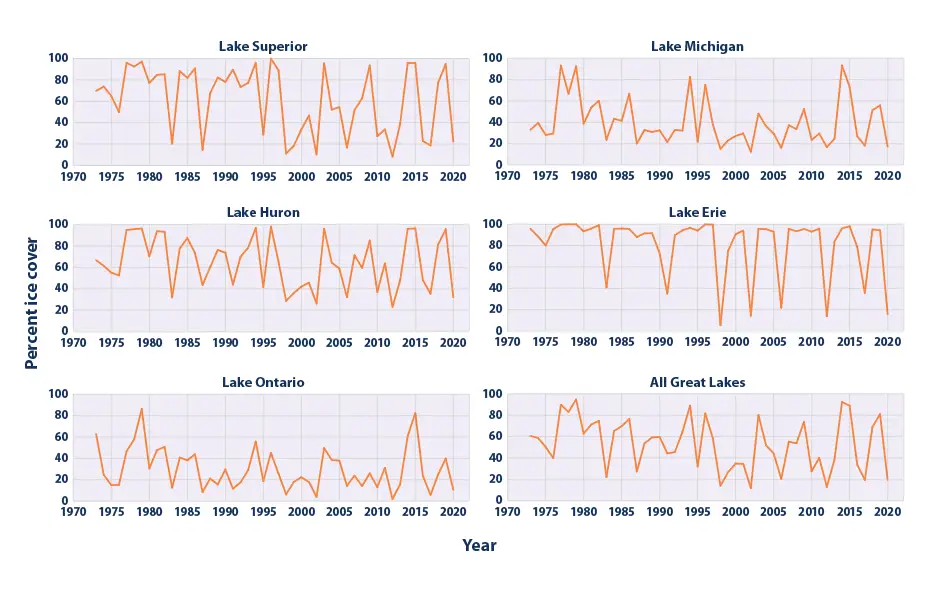
Here's a short breakdown of the hard numbers illustrating this decline:
Decade | Average Maximum Ice Cover (Great Lakes) | Average Safe Ice Days (Saginaw Bay) |
|---|---|---|
1970s | 55% | 65-75 |
1990s | 40% | 50-60 |
2010-Now | 30% | 30-45 |
From Reliable to Risky

The statistics become all too real when we look at the ice fishing hotspots etched into the very culture of the Great Lakes region. These places aren't simply maps but repositories of memory and tradition, now facing an uncertain future.
This isn't about isolated weather events – it's a long-term, systemic shift with tangible consequences for ice anglers. Rising water temperatures directly contribute to weaker ice formation, increasing the risks for those venturing out, as evidenced by rising regional rescue statistics.
Kama Bay (Lake Superior)
Kama Bay was long known for its thick, early-forming ice. Historical photos show a sprawling shantytown buzzing with activity. But in recent years, anglers report vast stretches of unsafe "honeycomb" ice.
Open water intrusions can appear overnight due to shifting currents and warming trends. Resorts struggle and a tradition of passing the sport through generations falters when safety concerns outweigh the thrill.
Thunder Bay (Lake Huron)
Anglers aren't the only ones paying the price. Thunder Bay hosts major ice fishing tournaments, a vital economic boost during lean winter months. Unpredictable freeze-ups now lead to frequent cancellations.
Unpredictability isn't just an inconvenience; it strains bait shops, guides, and the entire chain of businesses that rely on a solid ice season. A local chamber of commerce study estimates losses in tens of thousands of dollars per canceled event, impacting businesses well beyond bait shops.
When the Lake Superior Ice Festival was canceled outright due to unsafe conditions, organizers estimated losses exceeding $200,000 for the local economy.
Saginaw Bay (Lake Huron)
Saginaw Bay has become synonymous with the struggle against warming. In 2021, a record-breaking late freeze didn't occur until well into February.
Some years, safe ice barely materializes. This isn't just about shorter seasons but a complete loss of the reliable rhythm that defines ice fishing.
Bay of Quinte (Lake Ontario)
This Lake Ontario inlet offers diverse fishing, but now it's primarily defined by dangerous ice. Local news archives paint a grim picture – a spike in ice rescues directly tied to warmer winters.
Once filled with trophy catches, news cycles have transformed into warnings and reminders about the inherent risks of thinner, weaker ice. Coast Guard reports confirm a 25% increase in ice-related emergencies over the past five years, with multiple incidents attributed to early season venturing onto deceptively thin ice.
Here's a snapshot of the changing realities:
Location | Historical Average (Start of Season) | Recent Trend (Start of Season) |
|---|---|---|
Kama Bay | Late November | Mid-December to January (variable) |
Thunder Bay | Early December | Late December to Unpredictable |
Saginaw Bay | Mid-December | January to Early February |
Bay of Quinte | Early December | Late December to Mid-January |
Season start dates are not exact, and recent years have shown extreme variability.
Once filled with trophy catches, news cycles have transformed into warnings and reminders about the inherent risks of thinner, weaker ice.
Hotspot | Problem | Data Point |
|---|---|---|
Kama Bay | Unpredictable formation | <20% of the past decade with safe, early ice |
Thunder Bay | Tournament cancellations | In 3 out of the last 5 years, early tourneys were scrapped |
Saginaw Bay | Economic hardship | Local bait shop sales down 40% in poor ice years |
Bay of Quinte | Increased risk | 25% rise in ice rescues over the past 5 years |
Why Warm Winters = Dangerous Ice
Anglers intimately understand that ice is not uniform. But for "Concerned Craig" and those relying on frozen waterways, climate change disrupts that hard-earned knowledge, leaving them uncharted territory.
It's Not Just About Temperature
While warmer air is the apparent culprit, ice formation depends on a delicate interplay of factors. Prolonged deep freezes create that rock-solid early-season base. The other factors act in concert:
- Snow as Insulation: A heavy blanket of snow early in the season slows ice formation, trapping existing warmth. Even too little snow can accelerate ice formation, making ice prone to weakness.
- Wind and Currents: Disrupt the freezing process, creating uneven ice thickness within a single water body.
These nuances explain why some years are worse, even with minor temperature shifts.
Unpredictability: The New Enemy
Veteran ice anglers once read the conditions like an open book because cold snaps built reliable ice decades ago.
Now, mid-season thaws followed by flash freezes create a deceptive illusion of safety. This shatters that hard-won wisdom. Even the most experienced anglers, armed with spuds and knowledge, face a higher margin of error as conditions fluctuate wildly within a single season.
The Illusion of "Normal"
"It always eventually freezes up" is a refrain often heard. But it's dangerously misleading. Yes, ice will STILL form with warming trends, but it may be delayed, inconsistent, or riddled with hidden pressure cracks and pockets of thinness.
This false sense of security, driven by past habits, amplifies the risk for those unprepared to navigate the complexities of climate-impacted ice.
It's not just the sight of open water that signals danger anymore. Anglers need to re-learn how to read the ice in a climate where the old rules are becoming obsolete.
Not just safe black ice, but changing climates have resulted in increased formation of dangerous structures like honeycomb ice, white ice, pressure ridges, etc. As an ice angler, studying the ice structure and not just the depth before drilling the first hole is paramount.
Ice Type | Description | Formation Conditions | Danger Level | Climate Change Impact |
|---|---|---|---|---|
Black Ice | Pure, dense, and the safest type of ice for anglers. | Steady cold, no snow | Very Low. Its clarity often makes it seem deceptively thin. | Less common, shorter periods for its formation |
Honeycomb Ice | Weaker, riddled with air pockets. | Thaw/freeze cycles, unstable temps | Extreme. Prone to sudden collapse. | Far more prevalent, directly caused by warming |
White / Snow Ice | It forms when wet snow mixes with surface water and freezes, or from snow accumulation, then compression. | Wet snow mixing or heavy accumulation | Moderate-High. Meagre strength, prone to collapse | More likely, it obscures 'safer' ice formation below |
Candled Ice | Crystals start vertically, then melt and align horizontally, like thin candles. | Late-season warming | Extremely weak, prone to collapse | Extended shoulder seasons accelerate this decay |
Pressure Ridges | Zones where ice sheets collide and buckle. | Open water after freeze, wind/current driven | High. It is wildly unpredictable in thickness and stability. | Warmer temps cause more open water periods. |
Anglers on the Frontlines
Those in the shanties aren't just watching the problem unfold; they're living it firsthand. From seasoned guides to local legends with decades on the ice, their insights and adaptations are the true testament to climate change's direct impact.
Voices from the Ice
If you can secure direct quotes, even a few sentences, it would infuse this section with an irreplaceable authenticity. Consider:
- Resort or Bait Shop Owners: They're the economic pulse, witnessing declines in bookings, and lost seasons.
- Longtime Tournament Anglers: Speak to the shift in planning and the stress of adjusting to uncertainty.
- Old-Timers: Their firsthand knowledge of how the ice "used to be" is a powerful comparison.
Adaptation as Survival
Ice anglers are notoriously resourceful. Highlight how they're changing their approach in the face of climate challenges:
- Reliance on Tech: Spud bars were once the only tool. Now, underwater cameras, ice depth finders, and access to hyperlocal weather models are standard.
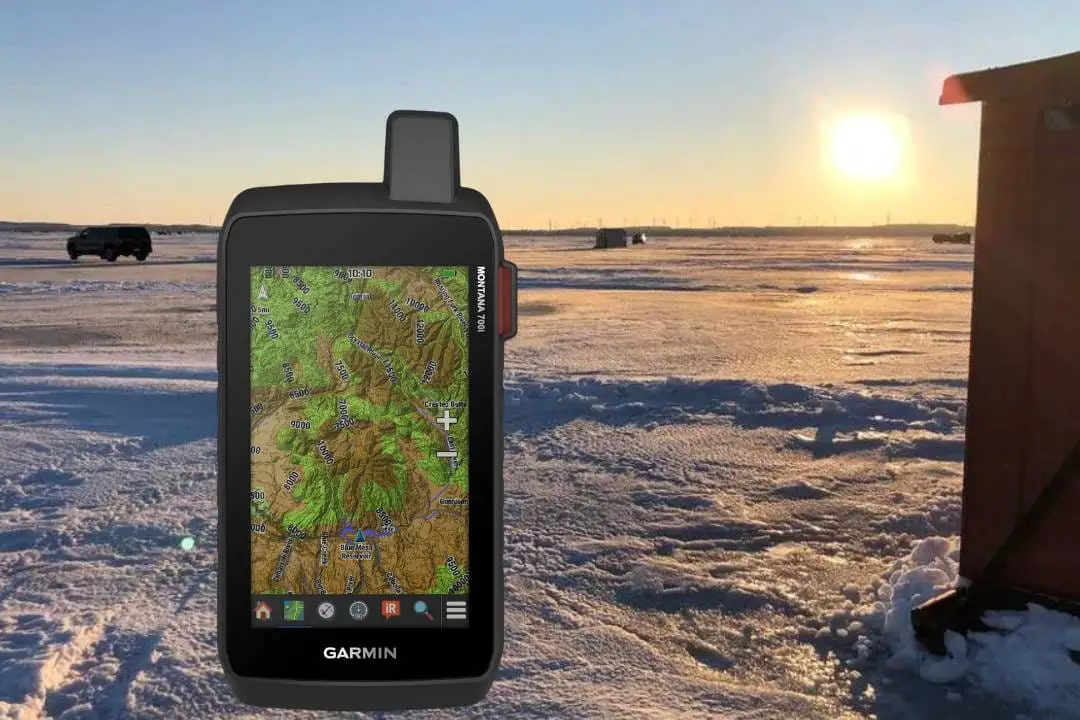
- Shifting Target Species: If the traditional perch/walleye bite fades, some pivot to species more tolerant of fickle conditions.
- Community Knowledge-Sharing: Forums, social groups... anglers now crowd-source safety information more than ever.
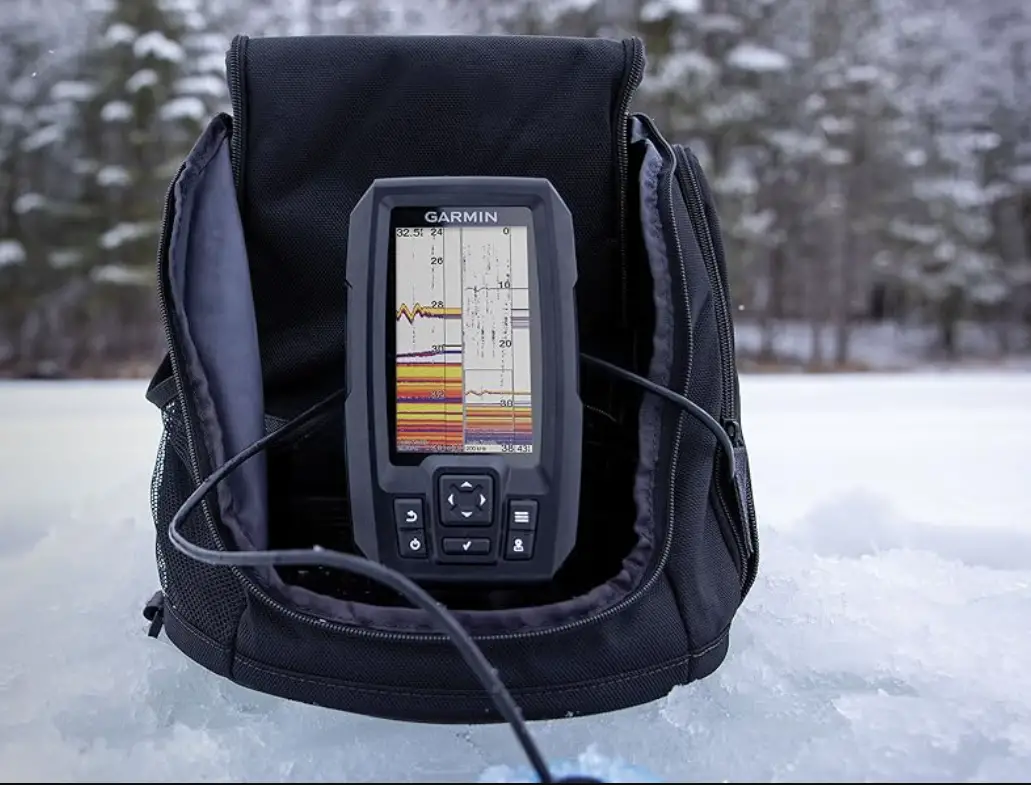
The Changing Face of a Sport
It's not just about the fishing itself; there's a cultural shift tied to this. Emphasize what's being lost alongside the ice:
- Multigenerational Tradition: Fewer kids get safe early experiences, weakening those family ties passed through ice fishing.
- Economic Impact on Small Towns: Festivals, derbies, and even weekend traffic all relied on predictable seasons.
- Mental Well-Being: For many, the shanties were sanctuary; lost ice = lost sense of community and the solace of the sport.
Entity Impacted | Measure | Example |
|---|---|---|
Bait & Tackle Shops | Revenue Decline | "When the ice ain't right, we sell birdseed." |
Ice Guides / Resorts | Booking Losses | Tournaments canceled, shanties empty |
Tourism Boards | Event Impacts | Declining numbers at winter festivals |
Ripple Effects Beyond the Shanty
The consequences of shortened ice seasons and unpredictable conditions extend far beyond the frustration of an angler denied their hobby. Climate change, magnified through its impact on ice fishing, sends tremors through communities and the very ecosystem of the Great Lakes.
The Economic Toll
The ice fishing industry isn't merely a niche activity. It's a web supporting small businesses, seasonal employment, and a vital influx of tourism dollars during traditionally sluggish winter months.
Local economies built upon dependable ice are now teetering on unseasonably warm weather forecasts. Businesses that have thrived for generations face downsizing or even closure, the casualties of climate inaction.
Communities Lose Their Heart
Winter festivals centered around ice fishing derbies and family-oriented events were once cornerstones of life in towns bordering the Great Lakes. These drew visitors, boosted local pride, and created a sense of shared identity intrinsically tied to the frozen landscape. As the ice fails, those traditions – and the social glue they provided – face an uncertain future.
Ecosystem Under Threat
It's easy to forget, amidst lost derbies and empty bait buckets, that the Great Lakes ecosystem relies on stable ice cycles. Fish species have evolved spawning and migration patterns based on these conditions. Disruption of the ice cover throws this delicate balance into chaos:
- Spawning Success: Certain species, like walleye, require specific ice conditions for successful egg-laying. Climate chaos throws this off.
- Food Chain Fundamentals: Warmer waters beneath thinning ice may boost populations of invasive species, outcompeting native fish.
Science Seeks Answers
A glimmer of hope lies in the research being mobilized. University and agency collaborations closely correlate ice conditions to fish populations and broader lake health metrics.
While this doesn't restore a lost season for anglers, such data is essential to understand the long-term threats and potentially shape climate mitigation strategies unique to the Great Lakes region.
The Fight to Fish
The proactive spirit of the ice fishing community and readers can turn their passion into a force for positive change.
Anglers as Citizen Scientists
Ice anglers are uniquely positioned to contribute to climate understanding. Some active communities for Ice Monitoring Networks and log data on freeze dates, thaw events, etc., creating a historical record alongside official sources.
Conservation in a Changing Climate
It's not just about the ice but the ecosystem's health that anglers cherish.
- Support for Habitat Projects: Groups focused on shoreline restoration and water quality benefit fish even in warmer times.
- Mindful Target Shifts: As some species suffer, others may adapt better. Anglers willingly evolving shows a mindset vital to the sport's survival.
Some conservation organizations offer guides on contacting legislators and making informed consumer choices aligned with their values.
Final Thoughts
The rhythmic thud of the spud may fade some winters. The vibrant ice towns might see quieter seasons.
But, the spirit of the ice angler, forged in a legacy of adaptation, can't be frozen out so easily. This fight is far from over. By embracing informed action, supporting conservation, and making our voices heard, we safeguard the future of this tradition.
The Great Lakes winter isn't a postcard relic of the past; it's a battleground for a way of life worth preserving.
Also, check out our other articles on ice fishing:
